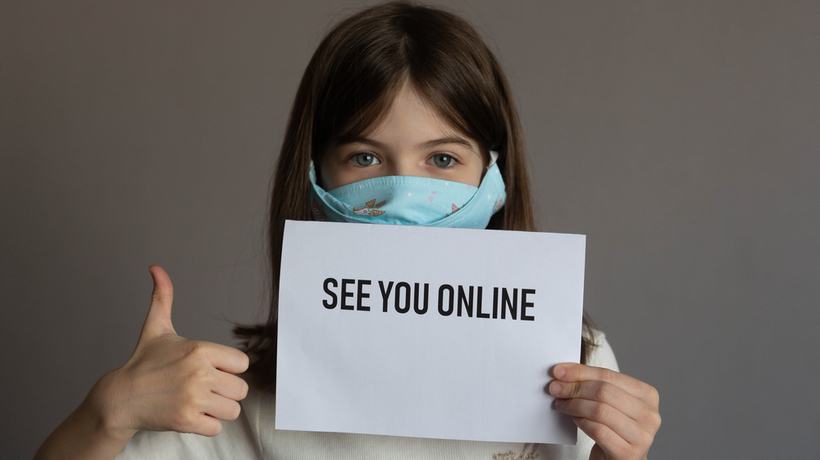Education Trends In The Post-COVID Era
The COVID-19 crisis has had a major impact on the global education sector. And even though the pandemic is slowly dying down and things are returning to "normal," there is no denying that the effects the virus has had on the modern way of life will be felt in the years to come. While both online and face-to-face learning have their advantages and disadvantages, both students and teachers will need to adapt to the demands of the new normal and realize that education might look a bit different than it once did.
Teachers, students, and schools need to monitor the new trends to prepare for the future of learning. While teachers will need to refine their methods to create a more engaging online environment for their students, students will need to leverage the available technologies and use additional study resources.
Let’s put this into perspective and take a look at 5 current trends that are shaping education in the post-COVID era:
1. Learning Can Happen Anywhere Online
Even before the pandemic, many places where learning could happen (museums, libraries, local events, and lectures) had started digitizing their processes and taking the learning experience into the online realm. Nowadays, there is no denying that learning can happen almost anywhere online, but aside from news portals, social media, and forums, it’s important to recognize those formal and accredited learning spaces that have ventured into the online world [1].
While education will continue through academic institutions in the online space, students should start exploring those interactive and highly engaging learning environments like virtual tours and lectures, virtual museums and libraries, and more. This is also a great opportunity for teachers to organize class excursions and tours in the digital space in order to engage students while adhering to the COVID-prevention measures.
2. Tech Education For Teachers Will Become A Priority
Speaking of teachers, it’s important to note that the COVID-19 pandemic [2] has brought many new challenges into their lives. One of these challenges is the problem of accessing and leveraging the right technologies to deliver engaging, effective, and collaborative lectures. This is not so much a problem for younger generations of students who are, in fact, digital natives and are innately tech-savvy individuals who know how to attend classes online and participate in lectures.
For older teachers, however, this can be a big challenge, which is why an emphasis should be put on making technology accessible to older generations. If teachers are to deliver quality to their students in the digital realm, then they will need to learn how to properly use various tech and even some advanced tech like VR and AR to create a more engaging classroom for all.
3. Leveraging Auxiliary Learning Platforms
As for students, there is no denying that the COVID-19 crisis has forced them to become more creative in their learning styles and the resources they use. Given the lack of face-to-face interaction or the ability to exchange notes with their peers in person, students are now using auxiliary online learning platforms to supplement their learning.
This is already a notable trend in Australia, for example, where students who are getting ready to take their high school certificate tests have the ability to compare their notes with past HSC study notes from other students and use them to better prepare for their exams. But of course, this is not just happening in Australia, as online learning platforms are becoming popular in all regions of the world where students are looking to supplement their learning material from reputable sources.
4. Weaving Socialization Into The Online Classroom
One of the biggest challenges for educators in the post-COVID world is to mimic the kind of engagement and socialization that the physical classroom brings to students. Given the fact that schools are not just intended to teach, but also to mold children into thriving young adults, it’s important not to lose this vital component of education when teaching online.
One way to do this is to leverage immersive learning [3] with advanced technologies. The other way is to focus on collaborative learning experiences and optimize online classrooms as interactive workshops for children to participate in. Of course, it’s important to use both technology and advanced teaching skills to create such an immersive online space.
5. Blended learning As The Future Of Education
Even though online learning is not going anywhere, that doesn’t mean that it is going to become the predominant form of education. Quite the contrary, schools around the world are once more opening their doors and students are filling the physical classrooms. What will prevail, however, is the blended form of learning [4] where teachers will conduct classes both online and offline. In the early days after the pandemic, and perhaps in the years to come, we will see online and offline learning being used together to minimize the risk of infections and make education accessible to high-risk groups.
Over To You
Education is going to change forever after the pandemic and it’s important for schools, teachers, and students to adapt quickly. Knowing these trends and leveraging the opportunities they bring will help everyone contribute to better education and better academic results.
References:
[1] The Pandemic Pushed Universities Online. The Change Was Long Overdue
[2] Post COVID-19 Education System: eLearning Vs. Classroom-Based Learning
[3] What Is Immersive Learning? - Preparing For A Post-Pandemic World









